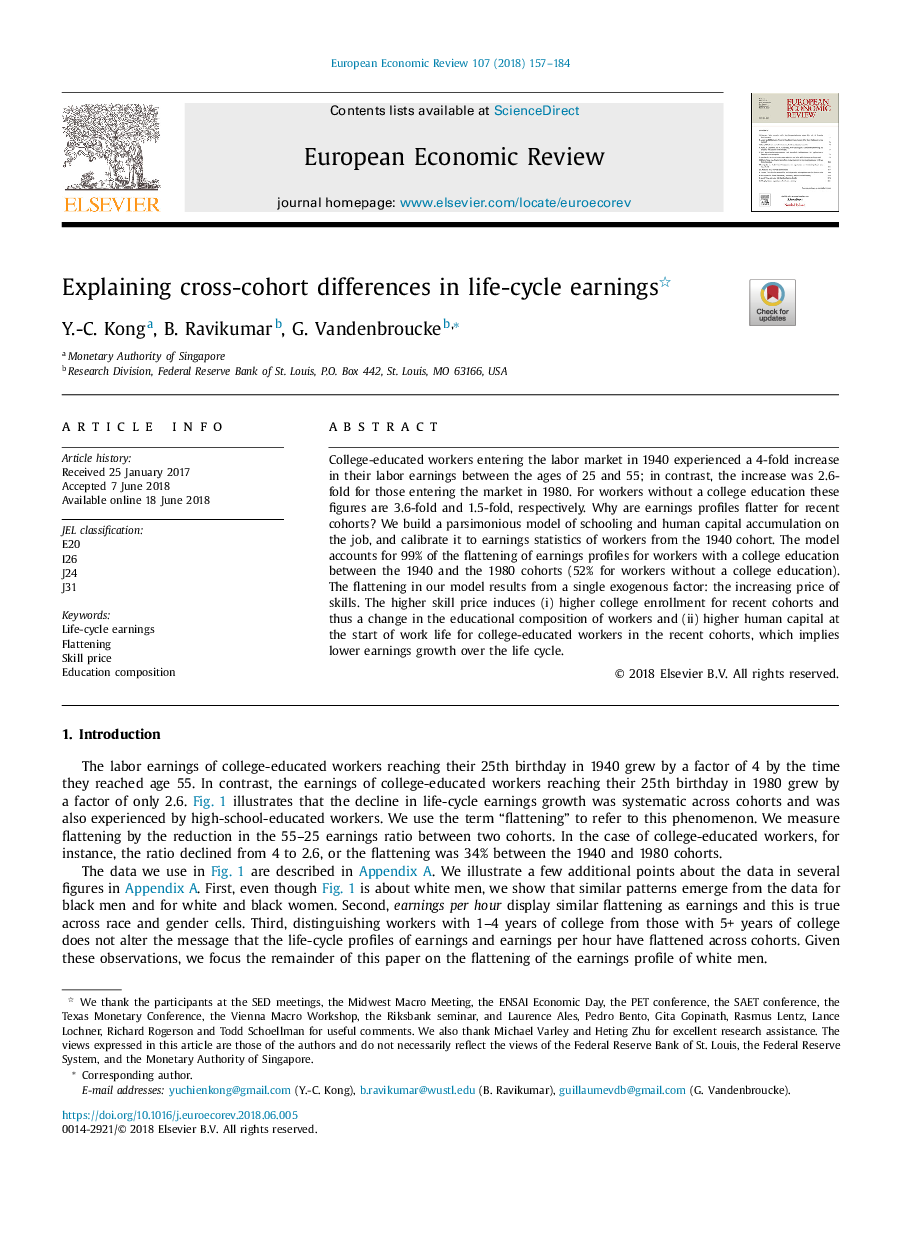| Article ID | Journal | Published Year | Pages | File Type |
|---|---|---|---|---|
| 7351388 | European Economic Review | 2018 | 28 Pages |
Abstract
College-educated workers entering the labor market in 1940 experienced a 4-fold increase in their labor earnings between the ages of 25 and 55; in contrast, the increase was 2.6-fold for those entering the market in 1980. For workers without a college education these figures are 3.6-fold and 1.5-fold, respectively. Why are earnings profiles flatter for recent cohorts? We build a parsimonious model of schooling and human capital accumulation on the job, and calibrate it to earnings statistics of workers from the 1940 cohort. The model accounts for 99% of the flattening of earnings profiles for workers with a college education between the 1940 and the 1980 cohorts (52% for workers without a college education). The flattening in our model results from a single exogenous factor: the increasing price of skills. The higher skill price induces (i) higher college enrollment for recent cohorts and thus a change in the educational composition of workers and (ii) higher human capital at the start of work life for college-educated workers in the recent cohorts, which implies lower earnings growth over the life cycle.
Keywords
Related Topics
Social Sciences and Humanities
Economics, Econometrics and Finance
Economics and Econometrics
Authors
Y.-C. Kong, B. Ravikumar, G. Vandenbroucke,
